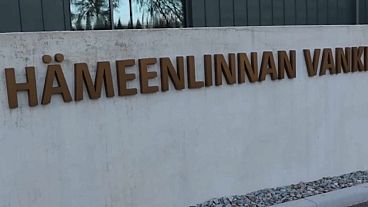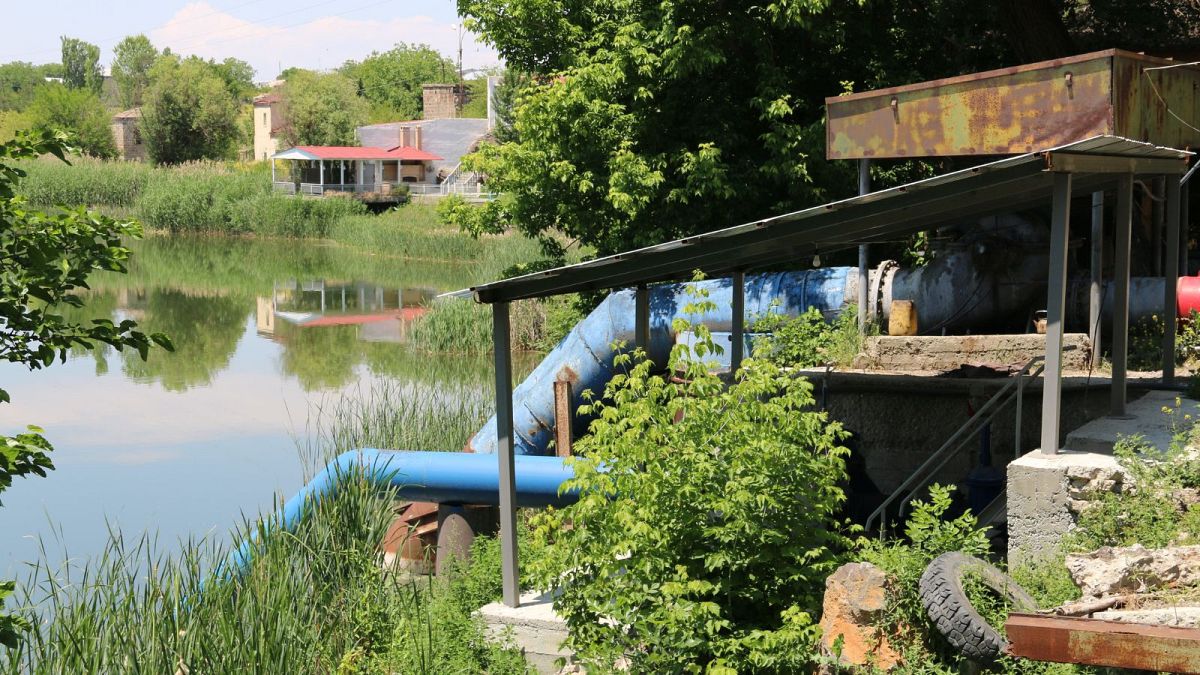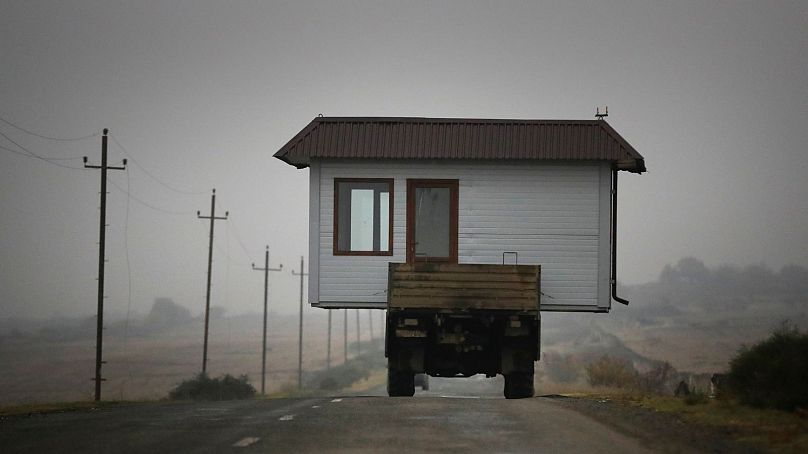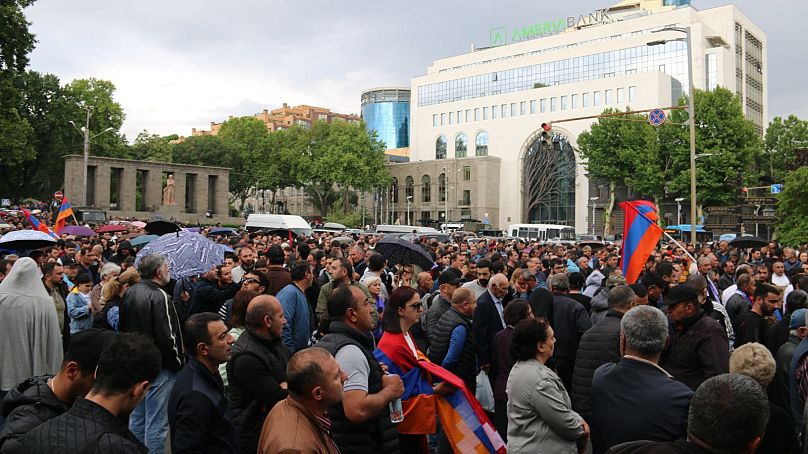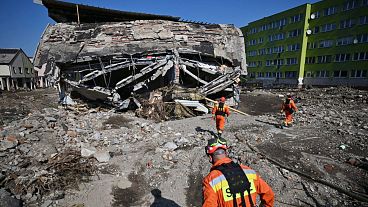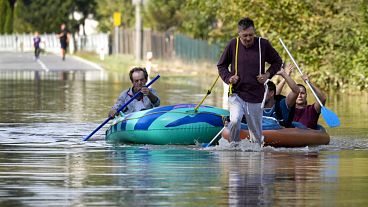Hydropower plants “are often very closely related to nation-building and national identity,” says one expert.
Azerbaijan, a petrostate on the southeastern edge of Europe, has been propelled into the limelight as the location of COP29. This follows an agreement with its arch-rival Armenia to begin a peace process after decades of war.
Hosting the UN climate conference brings a new level of scrutiny to the country - and pressure for it to speed up its own green energy transition which it previously announced as a top national goal.
Much of those efforts centre on the region of Nagorno-Karabakh - over which Armenia and Azerbaijan have fought a decades-long bloody war which led to many thousands of casualties and displacements on both sides.
In 2021, Azerbaijan’s president Ilham Aliyev designated Nagorno-Karabakh a “green energy zone” and announced investments into predominantly hydro, but also wind and solar power plants.
After its victory in the war with Armenia over Nagorno-Karabakh, Azerbaijan opened new hydropower plants in what it called a reconstruction effort.
As of today, four brand new plants have been built and more than ten sites reconstructed after the damage they suffered during the war. In total, around 40 new hydropower plants of various sizes are planned.
Azerbaijan plans to make Nagorno-Karabakh its ‘Green Silicon Valley’
Between 2021 and 2023, Azerbaijan assigned over $2.3 billion (€2.1 bn) to a programme providing infrastructure for the resettlement of about one million Azeris in Nagorno-Karabakh.
In 2022, at least three per cent of the funds went to Azerenergy, the state-owned electricity producer, for hydropower development in the region.
Speaking last September in the recently contested East Zangazur region, Aliyev said that the hydropower potential would stand at 270 megawatts by the end of 2024, “substantially supporting our green agenda.”
In total, he added, “the East Zangazur and Karabakh area has the potential of 10 thousand megawatts of green energy - hydro, solar, and wind.”
Azerbaijan’s key foreign partner in developing hydropower plants is the Japanese company Tokyo Electric Power Services. British fossil fuel giant BP and Saudi private energy supplier ACWA Power are collaborating with the Azeri government in developing solar and wind power in Nagorno-Karabakh. Swiss company sa_partners hasdeveloped master plans for green urban development.
“Karabakh will be the new Silicon Valley,” says Nargiz Hajiyeva, political scientist at the Azerbaijan State University of Economics. “But in a green way.”
The biggest focus is on hydropower, mainly because of the good conditions in the mountainous region and because many power plants have already existed there.
Before the 2020 offensive, Nagorno-Karabakh was self-sufficient, even a net exporter of electricity to Armenia, because of 36 functioning hydropower plants.
According to Garabet Kazanjian, a water expert at the American University of Armenia, building hydropower plants was “a statement to showcase that [Karabakh Armenians] were serious about staying in those lands. These plants aren’t cheap, it’s a proper investment.
“Now, Azerbaijan was extremely quick in moving in and starting projects of their own. Three months after the ceasefire in 2020, Aliyev was there opening a hydropower plant. This surely comes from the need, but it’s also a very strong political message to show strength and victory.”
How is Azerbaijan preparing for COP29?
Much like the United Arab Emirates before it hosted COP28 last year, Azerbaijan is busy greening its image ahead of the summit in November.
The country declared 2024 the 'Year of Solidarity for the Green World'. It wants to increase its share of renewables - firstly to 30 per cent of its total energy mix by 2030.
Eventually, Azerbaijan aims to become an exporter of green energy.
Developments in Nagorno-Karabakh serve both to push the green agenda forward and to legitimise the region’s status in the international arena.
In April 2024, Baku hosted a conference entitled ‘COP29 and Green Vision for Azerbaijan in Lachin’, a so-called land corridor that used to connect Nagorno-Karabakh with Armenia.
Lachin became the scene of an international dispute between Azerbaijan and Armenia over supplies access to Armenians living in the disputed territory after the 2020 Azeri offensive. In 2023, international organisations including the UN condemned what they described as the Azeri blockade.
Hydroproblems in Azerbaijan
Hydropower plants “are often very closely related to nation-building and national identity,” says Jenniver Sehring, associate professor of water governance and diplomacy at the IHE Delft Institute for Water Education in the Netherlands.
“It’s something modern - huge infrastructure, where the government can show that they’re doing something for development.”
But developing hydropower without proper assessments can be damaging to mountain ecosystems.
At the beginning of 2020, prior to the Azeri offensive, Nagorno-Karabakh resident Alexander Kananyan went on a hunger strike to protest the development of new hydropower plants in the region. He argued that the main rivers and their tributaries are getting “completely destroyed”.
The then-unrecognised Karabakh Armenian administration halted the construction of new plants and established a commission to determine the plants’ environmental impact. The Azeri offensive stopped this project.
The current hydropower boom reposes the question of whether environmental risks have been properly assessed.
The NGO Conflict and Environment Observatory (CEOBS) has warned that the speed of Azeri developments in Nagorno-Karabakh could have negative impacts on the environment.
A 2021 CEOBS investigation centred on deforestation for highway construction, but one of the report authors, Eoghan Darbyshire, says that the hydropower developments may also be happening too fast.
“We find no evidence of environmental impact assessments being undertaken,” he says. “In the case of hydropower plants, this may be especially risky for longer-term water supply and biodiversity.”
The EU is strengthening its energy ties with Azerbaijan
Baku’s plans to boost renewable energy are also made with the European Union’s energy needs in mind.
After Russia’s full-scale invasion of Ukraine, the bloc signed a Memorandum of Understanding (MoU) with Azerbaijan in July 2022 to strengthen energy ties.
Imports of Azeri fossil gas have been rising steadily. Currently, Azerbaijan supplies 4.3 per cent of the EU’s energy imports. The EU refers to Azeri gas as “stable and reliable” and expects the imports to double by 2027.
The MoU also mentions ambitions to boost Azeri renewable energy capacity so that it can be transmitted to the EU.
Meanwhile, the European Parliament has called for energy sanctions on Azerbaijan and for suspending the MoU.
In a resolution from February 2024, the Parliament condemned what it called “the policies of aggression, including the pre-planned military attack of Azerbaijan against Nagorno-Karabakh” and “organised starvation and isolation of the Armenians living in Nagorno-Karabakh through the blockade of the Lachin corridor.”
In response, a spokesperson for Azerbaijan’s Ministry of Foreign Affairs says that “resolutions and motions by the European Parliament against Azerbaijan, being one-sided and biased, have long become a usual business for the EP.
“Such resolutions, sponsored by several groups in the European Parliament that are influenced by Armenia and the Armenian Lobby, are an integral part of the smear campaign against Azerbaijan, in which every fact is falsified.”
They add that “appeals to introducing sanctions against Azerbaijan, do nothing but complicate Azerbaijan-EU relations.”
COP29 and diplomacy
Hosting COP has been an important diplomatic tool in Armenia-Azerbaijan relations.
Armenia agreed not to veto the Azeri bid to host COP29 as part of the conflict resolution. Several political scientists in Azerbaijan expressed the hope that the climate conference will bring a breakthrough in bilateral relations. Yet the office of Nikol Pashinyan, Armenia’s PM, stated that he has no plans to attend the summit in Baku.
While the prospect of peace is closer than it’s been in decades, many unresolved issues continue to threaten the fragile stability.
Last year, Azerbaijan sued Armenia in the Permanent Court of Arbitration for what it considers to be historic illegal use of renewable energy resources, particularly hydropower, in Nagorno-Karabakh. The case is ongoing.
The new border drawing procedure between the two countries is another major source of contention. In May 2024, tens of thousands os people protested in Yerevan over Pashinyan’s decision to hand over four border villages to Azerbaijan. Armenia states that Azerbaijan is occupying around 150 square kilometres of its sovereign territory.
It may take more than a climate conference to get the two nations to secure a lasting peace.




